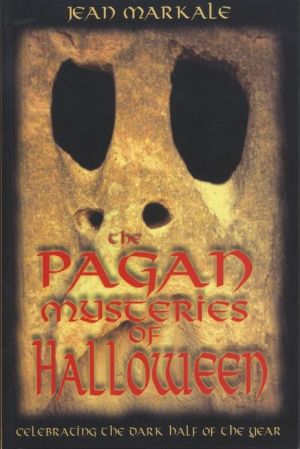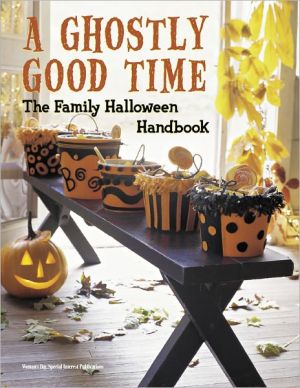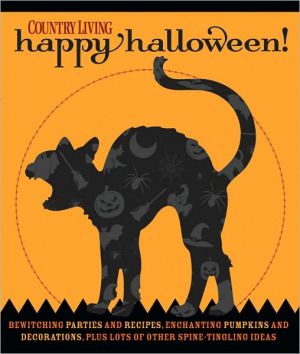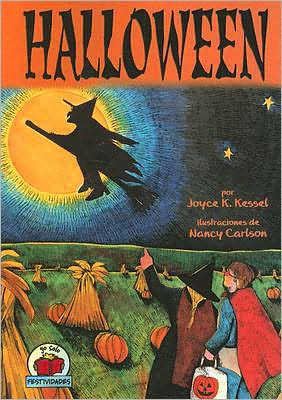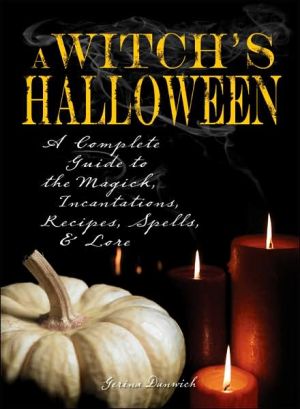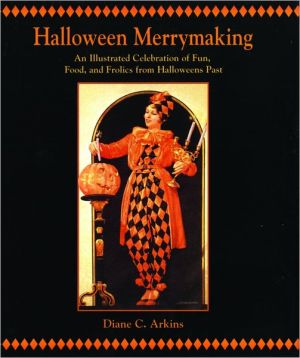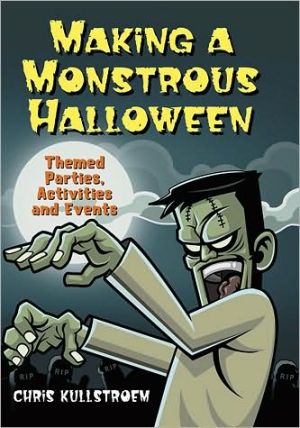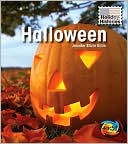The Pagan Mysteries of Halloween: Celebrating the Dark Half of the Year
A comprehensive examination of the rituals and philosophies of the Celtic holiday of Samhain, the inspiration for Halloween.\ • Presents the true meaning of this ancient holiday and shows how contemporary observances still faithfully reflect the rituals of pagan ancestors.\ • Explains why this holiday, largely confined to the English-speaking world since the advent of Christianity, has spread throughout the rest of Europe over the last two decades.\ One of humanity's most enduring myths is...
Search in google:
A comprehensive examination of the rituals and philosophies of the Celtic holiday of Samhain, the inspiration for Halloween.• Presents the true meaning of this ancient holiday and shows how contemporary observances still faithfully reflect the rituals of pagan ancestors.• Explains why this holiday, largely confined to the English-speaking world since the advent of Christianity, has spread throughout the rest of Europe over the last two decades.One of humanity's most enduring myths is that the dead, on certain nights of the year, can leave the Other World and move freely about the land of the living. Every year on October 31, when the children of the world parade through the streets dressed as monsters, skeletons, and witches, they reenact a sacred ceremony whose roots extend to the dawn of time. By receiving gifts of sweets from strangers, the children establish, on a symbolic plane that exceeds their understanding, a fraternal exchange between the visible world and the invisible world. Author Jean Markale meticulously examines the rituals and ceremonies of ancient festivities on this holiday and shows how they still shape the customs of today's celebration. During the night of Samhain, the Celtic precursor of today's holiday, the borders between life and death were no longer regarded as insurmountable barriers. Two-way traffic was temporarily permitted between this world and the Other World, and the wealth and wisdom of the sidhe, or fairy folk, were available to the intrepid individuals who dared to enter their realm. Markale enriches our understanding of how the transition from the light to the dark half of the year was a moment in which time stopped and allowed the participants in the week-long festival to attain a level of consciousness not possible in everyday life, an experience we honor in our modern celebrations of Halloween. Poet, philosopher, historian, and storyteller, Jean Markale has spent a lifetime researching pre-Christian and medieval culture and spirituality. He is the author of more than forty books, among which are The Druids, The Grail, The Great Goddess, The Celts, Merlin, Women of the Celts, Courtly Love, The Epics of Celtic Ireland, and King of the Celts. He is a specialist in Celtic studies at the Sorbonne and lives in the Brittany region of France. Publishers Weekly Markale, a French specialist in Celtic traditions, traces the history of Halloween from its origins as a Samhain festival, discussing its juxtaposition with the Christian All Saints Day and its modern renaissance as a mischievous children's holiday. Although the text is generally quite evenhanded, some oversimplifications creep in, as when Markale calls November 2, the Day of the Dead, "a kind of `ancestor worship' that dares not say its name," or when he claims that "we know" that the dead walk about on Halloween night "because some people have witnessed it." Markale is best when he sticks to history, claiming, for example, that after centuries of suppression in Europe, Halloween found new life among 19th-century Irish immigrants to America. (Sept.) Copyright 2001 Cahners Business Information.
The Pagan Mysteries of Halloween Celebrating the Dark Half of the Year Introduction 1. The Celtic Festival of Samhain The Festival of Samhain in the Celtic Calendar The Rituals of Samhain Death and Rebirth of the King 2. The Fantastic Night The Liturgical Games of Samhain The Interconnection with the Other World The Abolition of Time The Profound Meaning of Samhain 3. The Festival of All the Saints The Dating of All Saints' Day The Festival of the Dead Purgatory The Protectress of the Anaons 4. The Shadows of Halloween The Permanence of Halloween The Diffusion of Halloween Beliefs, Rituals, and Spells Conclusion: Exorcising Death Notes Bibliography
\ From Barnes & NobleCelt specialist Jean Markale is an expert on Sarnhain, the Celtic precursor of Halloween. In this spellbinding study, he tells how the pagan rites and ceremonies of Sarnhain shaped the customs of our modern holiday and explains the sudden spread of Halloween's popularity.\ \ \ \ \ The Midwest Book Review". . . an informative consideration of the enduring myths surrounding the October holiday."\ \ \ PagaNet News"This is a well-written, intellectual book."\ \ \ \ \ March 2002 Aquarius"Here is a book that is scholarly in its study of a pagan holiday, written by one of Europe's leading experts on Celtic culture."\ \ \ \ \ Rachel Wren"All in all, this book provides some useful and well-researched information."\ \ \ \ \ Mike Gleason“. . . should be in the library of every group working in a Celtic system, as well as in the library of many elders who are looking for something more than the usual, superficial treatment of Celtic beliefs. . . . it is a well of knowledge which should not be passed over lightly. Take the time to read and absorb the information herein and you will be more than amply rewarded.”\ \ \ \ \ Nellie Levine"The Pagan Mysteries of Halloween shines a broader light on a very popular and generally lighthearted holiday, giving it more meaning and form than what we are accustomed to."\ \ \ \ \ March 2002"Here is a book that is scholarly in its study of a pagan holiday, written by one of Europe's leading experts on Celtic culture."\ \ \ \ \ Publishers WeeklyMarkale, a French specialist in Celtic traditions, traces the history of Halloween from its origins as a Samhain festival, discussing its juxtaposition with the Christian All Saints Day and its modern renaissance as a mischievous children's holiday. Although the text is generally quite evenhanded, some oversimplifications creep in, as when Markale calls November 2, the Day of the Dead, "a kind of `ancestor worship' that dares not say its name," or when he claims that "we know" that the dead walk about on Halloween night "because some people have witnessed it." Markale is best when he sticks to history, claiming, for example, that after centuries of suppression in Europe, Halloween found new life among 19th-century Irish immigrants to America. (Sept.) Copyright 2001 Cahners Business Information.\ \
